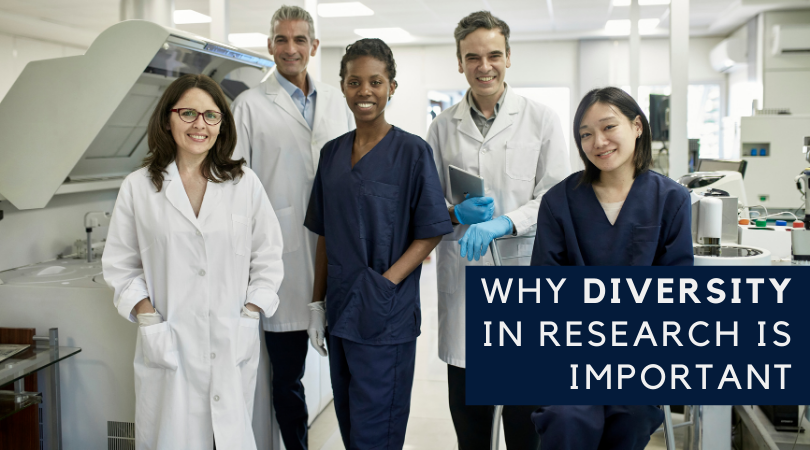The Importance of Diversity in Biomedical Research
Posted on
Diversity is a hot-button issue these days, with organizations from police forces to major corporations taking steps to address the lack of racial, cultural, socioeconomic, and gender diversity in their ranks. Biomedical research is no exception.
 Like many other arenas, the field of scientific research is sorely in need of more members of underrepresented groups. According to the U.S. Census Bureau, in 2010, Hispanics, African-Americans and Native Americans made up over 30% of the U.S. population, but accounted for just 9% of doctoral degrees in STEM fields.
Like many other arenas, the field of scientific research is sorely in need of more members of underrepresented groups. According to the U.S. Census Bureau, in 2010, Hispanics, African-Americans and Native Americans made up over 30% of the U.S. population, but accounted for just 9% of doctoral degrees in STEM fields.
The Benefits of Diversity
Why is diversity so important in the biomedical field? As with any workplace or organization, bringing together people with different backgrounds to work cooperatively brings new ideas and perspectives to the table, ultimately improving innovation and productivity as well as cultural sensitivity and inclusiveness.
In the biomedical research community specifically, an increase in diversity strengthens the STEM talent pool and improves the quality of the research, advancing the ability of the United States to compete in the global marketplace. In a 2014 article in Nature, authors Richard B. Freeman and Wei Huang found that research teams with greater ethnic diversity produce higher-quality science and generate academic papers that receive a more positive reception from the scientific community.
Diversity also helps address racial and cultural healthcare disparities, since scientists from underrepresented groups are more likely to be familiar with, and motivated to develop solutions for, health issues facing the demographic groups to which they belong.
In addition, culturally diverse research teams are more likely to avoid biased outcomes in preclinical research and clinical trials, which traditionally focus mostly on white populations of European descent to the exclusion of other races and ethnicities. A 2019 study published in Cell, for example, found that 78% of individuals included in genomic studies of disease up to 2018 were of European descent.
The Process of Improving Diversity in STEM
Increasing diversity in the biomedical research field is a gradual process requiring several different initiatives. Many educational institutions are addressing the issue head on by proactively developing programs and initiatives designed to encourage diverse students to attend their institutions and pursue STEM degrees.
A total of 54 U.S. colleges and universities now participate in the Aspire Alliance—a $10 million initiative funded by the National Science Foundation (NSF) to diversify STEM faculty, promote more inclusive teaching practices, and support the success of STEM students from underrepresented groups at colleges and universities throughout the U.S.
Educational institutions also have access to several programs and grants designed to promote diversity, including the Minority Access to Research Careers (MARC), Research Initiative for Scientific Enhancement (RISE), Initiative for Maximizing Student Development (IMSD), and Louis Stokes Alliances for Minority Participation (LSAMP).
In the last decade, several new divisions and positions have been created to address the issue of diversity. In 2011, two diversity programs run by the National Institutes of Health (NIH) National Institute of General Medical Sciences (NIGMS)—the Minority Opportunities in Research (MORE) division and the T32 Training Grants programs—were reorganized to form the Training, Workforce Development and Diversity (TWD) Division, which promotes the development of a diverse biomedical research workforce by funding research training, career development and diversity-enhancing activities at the undergraduate, graduate, postdoctoral, faculty and institutional levels.
In 2014, the NIH created a new title—chief officer for scientific workforce diversity (COSWD)—a position designed to enhance the diversity of the biomedical research workforce.
In 2015, the NIH created the Division of Biomedical Research Workforce (DBRW) to “cultivate a robust and diverse biomedical research workforce that will ensure the nation’s capability to improve health.”
All of these efforts will hopefully be successful in creating a more diverse biomedical research field, leading to a stronger scientific workforce, more effective research outcomes, and better health for everyone.